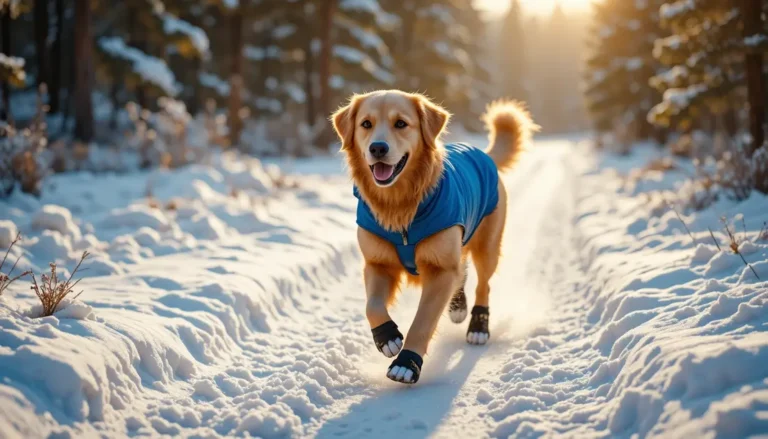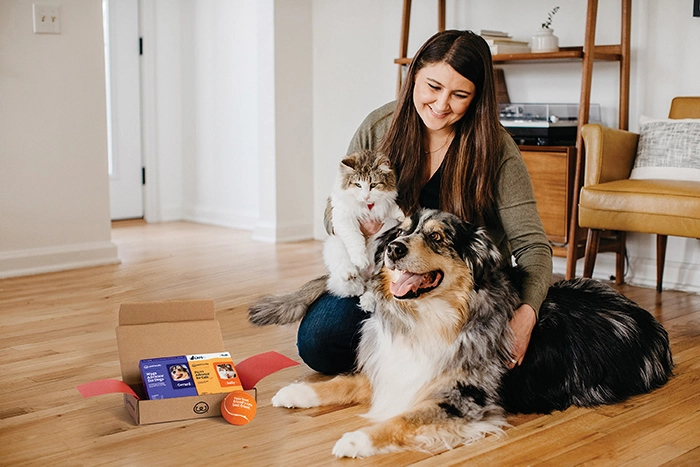Winter weather creates unique challenges for keeping pets physically active. Cold temperatures, icy surfaces, and shorter daylight hours can make regular exercise routines difficult or even dangerous.
Pet winter exercise adaptations are specific adjustments to your animal’s activity schedule, environment, and protective equipment that maintain their fitness while preventing cold-weather injuries like frostbite, hypothermia, and paw damage. These modifications ensure your companion stays healthy throughout the season.
Understanding these adaptations matters because inadequate winter exercise leads to weight gain, behavioral issues, and weakened immune systems.
This guide provides breed-specific strategies, indoor alternatives, safety protocols, and veterinary-backed recommendations to help your pet thrive during cold months.
Why Winter Exercise Adaptations Matter for Your Pet’s Health
Cold weather significantly impacts your pet’s physical and mental well-being. Without proper activity modifications, dogs and cats face joint stiffness and seasonal affective disorder symptoms.
Studies show that 53% of dogs gain weight during winter months when exercise routines remain unchanged, putting them at risk for diabetes and heart disease.
The psychological effects are equally concerning. Pets denied appropriate outlets for their energy often develop destructive behaviors, excessive barking, or anxiety.
Cats may become withdrawn, while dogs might chew furniture or dig compulsively. Proper winter exercise adaptations maintain cardiovascular health, preserve muscle mass, and provide essential mental stimulation when outdoor time is limited.
Veterinarians emphasize that consistency matters more than intensity. A 20-minute adapted winter workout provides greater benefits than skipping exercise entirely.
The key lies in understanding your specific pet’s needs based on breed characteristics, age, health status, and local climate conditions.
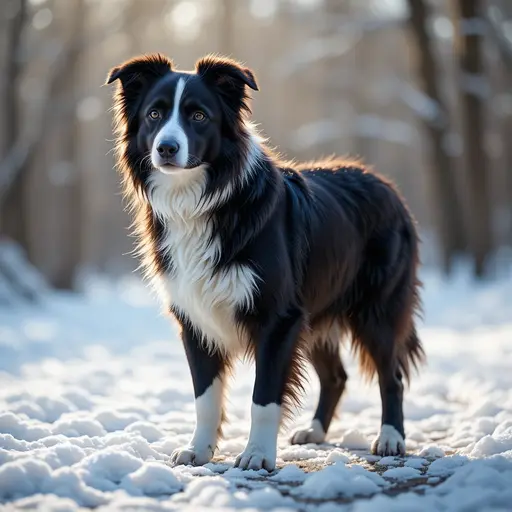
Understanding Your Pet’s Cold-Weather Tolerance
Not all pets respond to cold weather equally. A Siberian Husky thrives in conditions that would endanger a Chihuahua within minutes. Before implementing any exercise adaptations, assess your individual animal’s natural cold tolerance.
Breed-Specific Cold Thresholds
Working and sporting breeds from northern climates possess physiological advantages for cold weather. These dogs have double coats, thicker paw pads, and higher metabolisms that generate body heat.
Examples include Alaskan Malamutes, Bernese Mountain Dogs, and Newfoundlands. These breeds often require less exercise modification, though they still need supervision.
Conversely, short-haired breeds, toy breeds, and those with low body fat face extreme cold sensitivity. Greyhounds, Boxers, and Miniature Pinschers lack insulating undercoats and begin shivering below 45°F.
Brachycephalic breeds like Bulldogs and Pugs struggle with temperature regulation due to their compromised respiratory systems, making them vulnerable to both cold air and exercise-induced stress.
Cat breeds show similar variation. Maine Coons and Norwegian Forest Cats handle cold better than Siamese or Sphynx cats, which should remain indoors when temperatures drop below 50°F.
Age and Health Factor Considerations
Senior pets require significant exercise adaptations regardless of breed. Arthritis worsens in cold, damp conditions, making joints stiff and painful.
A 12-year-old Labrador needs shorter, more frequent walks on cleared pathways rather than long hikes through snow.
Puppies under six months have underdeveloped temperature regulation and should limit outdoor exposure to 10-15 minutes.
Health conditions dramatically affect cold tolerance. Diabetic pets experience circulation problems that increase frostbite risk.
Pets with heart or kidney disease dehydrate faster in cold, dry air. Overweight animals already have compromised respiratory function and should avoid strenuous cold-weather activity until they reach a healthier weight.
Always consult your veterinarian before starting winter exercise routines if your pet has chronic health issues or is recovering from illness.
Essential Outdoor Pet Winter Exercise Adaptations
When the thermometer drops, outdoor activities require strategic modifications. These adaptations protect your pet while maintaining their fitness baseline.
Timing and Duration Adjustments
Schedule outdoor exercise during the warmest part of the day, typically between 10 AM and 3 PM. This avoids the extreme cold of early morning and evening while maximizing available sunlight.
Monitor the “feels like” temperature rather than the actual reading, as wind chill dramatically affects your pet’s comfort and safety.
Reduce outdoor session length by 30-50% compared to summer routines. A dog that normally runs for 60 minutes should limit winter workouts to 30-40 minutes maximum.
Watch for warning signs: shivering, lifting paws, or anxious behavior indicate it’s time to return indoors immediately. It’s better to have multiple short sessions than one prolonged exposure.
Implement the “15-minute rule” for most dogs: if you cannot hold your bare hand on the ground comfortably for 15 seconds, the surface is too cold for your pet’s paws. Salt and chemical ice melts compound this risk, causing chemical burns and toxicity if licked.
Surface and Terrain Modifications
Snow and ice create hazardous exercise conditions. Deep snow forces pets to expend 2-3 times more energy for movement, leading to exhaustion and muscle strain.
Stick to cleared trails or packed snow rather than deep drifts. Avoid frozen ponds or lakes entirely—thin ice causes fatal accidents every winter.
Urban environments present additional challenges. Road salt damages paw pads and causes gastrointestinal issues if ingested.
Rinse paws with warm water after every outdoor session, even if you use protective booties. Consider carrying a small towel during walks to wipe paws immediately if your pet steps in road salt or antifreeze spills.
For dogs that require intense exercise, create a cleared “exercise track” in your yard by shoveling a path. This allows safe running without deep-snow exertion. Add traction aids like pet-safe sand or non-toxic ice melt to prevent slipping and ACL injuries.

Indoor Exercise Alternatives When Temperatures Drop
When outdoor conditions become unsafe, indoor activities maintain your pet’s physical and mental health. These alternatives prevent the “cabin fever” behaviors that damage homes and strain human-animal bonds.
High-Energy Canine Workouts
Treadmills designed for dogs provide consistent cardio workouts regardless of the weather. Start with 5-minute sessions at the lowest speed, using treats to create positive associations.
Always supervise treadmill use and attach the safety cord to your clothing. Most dogs adapt within 1-2 weeks and can eventually handle 20-30 minute sessions.
Stair climbing offers excellent resistance training. Guide your dog up and down stairs for 10-15 minutes, incorporating sit-stay commands at landings for mental engagement.
This activity strengthens hind leg muscles and improves balance. Avoid this with senior dogs or breeds prone to hip dysplasia.
Create indoor obstacle courses using household items. Arrange chairs for weaving, stack cushions for jumping, and use hula hoops for target training.
Five minutes of obstacle navigation burns as many calories as a 20-minute walk. Change the configuration weekly to maintain mental stimulation.
Feline and Small Pet Activities
Cats require vertical space for winter exercise. Install wall-mounted shelves at varying heights to create climbing routes.
Place treat puzzles on different levels to encourage jumping and problem-solving. Ten minutes of active play with feather wands or laser pointers twice daily meets most cats’ exercise needs.
For small dogs and indoor cats, treat-dispensing puzzles provide mental and physical stimulation. Freeze meals inside Kong toys or puzzle feeders to extend eating time from 2 minutes to 20 minutes. This mimics natural foraging behaviors and prevents boredom-related overeating.
Consider indoor playdates with compatible pets. Supervised social interaction in a safe indoor space provides exercise and socialization that single-pet households lack. Ensure all animals are vaccinated and temperament-tested before introducing them.
Must-Have Protective Gear for Winter Workouts
Proper equipment prevents injury and extends safe outdoor exercise time. Invest in quality gear designed specifically for pets.
Insulated Clothing and Footwear
Measure your pet carefully before purchasing jackets or sweaters. The garment should cover from neck to tail base without restricting movement or bathroom access.
Look for water-resistant materials with fleece lining. Reflective strips add visibility during shortened daylight hours. For most breeds, begin using jackets below 32°F, though thin-coated dogs may need them at 45°F.
Dog booties represent the most important winter investment. Quality boots prevent frostbite, salt burns, and ice ball formation between toes. Introduce boots gradually indoors using positive reinforcement.
Start with 2-minute sessions and build tolerance. Secure boots properly—too loose and they fall off; too tight and they cut circulation. Always have spare boots, as they frequently get lost in the snow.
For pets refusing boots, apply paw balm before and after walks. Musher’s Secret creates a breathable barrier against salt and ice.
Avoid human moisturizers containing zinc oxide, which is toxic if licked. After walks, soak paws in warm water for 30 seconds to dissolve ice balls and remove chemicals.
Visibility and Safety Equipment
Winter’s shorter days mean many exercise sessions occur in dawn or dusk darkness. LED collars, leash lights, and reflective vests make pets visible to drivers from 500 feet away.
Use a hands-free waist leash for better balance on icy surfaces, keeping your hands free for potential falls.
Carry a small emergency kit during winter walks: thermal blanket, extra booties, high-calorie treats, and your phone.
If you drive to exercise locations, keep extra towels and a heated car blanket for the return trip. Pets can develop hypothermia even after returning to a cold vehicle.
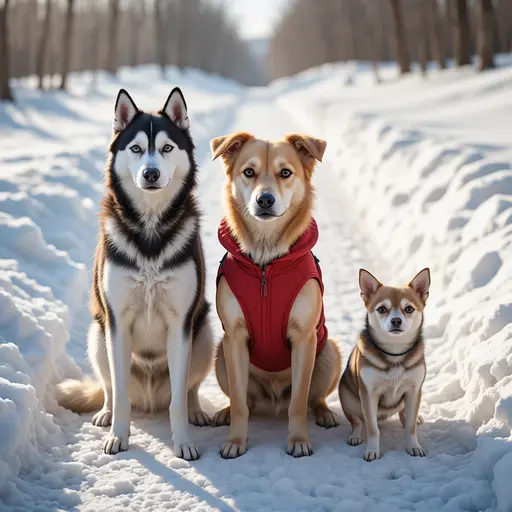
Nutrition and Hydration Adjustments for Active Winter Pets
Cold weather changes your pet’s metabolic needs. Proper nutrition supports their immune system and provides energy for temperature regulation.
Caloric Needs and Feeding Schedule
Active winter dogs may require 10-30% more calories than in summer. The body burns extra energy, generating heat and moving through snow.
However, this only applies to dogs maintaining regular exercise. Pets exercising less due to the weather should have their food reduced by 10-15% to prevent winter weight gain.
Feed smaller meals more frequently. Divide daily rations into three portions rather than two. This maintains steady energy levels and prevents the energy crashes that occur with large meals.
Feed 30 minutes before outdoor exercise to fuel activity, but avoid feeding immediately after return when the body is still cooling down.
Add omega-3 fatty acid supplements to reduce inflammation and support joint health. Fish oil capsules (1,000 mg per 30 pounds of body weight) improve coat condition and may reduce arthritis pain exacerbated by cold weather.
Hydration Management
Dehydration remains a serious winter risk. Cold air holds less moisture, and pets lose water through respiration. Indoor heating further dries the environment.
Ensure constant access to fresh, unfrozen water. Use heated water bowls for outdoor pets or check bowls every 2-3 hours.
Pets are less likely to drink cold water in winter. Offer lukewarm water after exercise to encourage drinking. Add low-sodium chicken broth to water for picky drinkers.
Monitor urine color—it should be pale yellow. Dark yellow indicates dehydration requiring immediate intervention.
Avoid snow consumption during exercise. Snow lowers core body temperature and may contain harmful chemicals or bacteria. Carry fresh water and a collapsible bowl on all winter outings.
Recognizing Warning Signs: When to Stop Exercising
Knowing when to end a workout prevents medical emergencies. Cold weather masks normal fatigue signals, so vigilant monitoring is essential.
Temperature-Related Distress Signals
Shivering represents the first sign of cold stress. While mild shivering generates heat, persistent or violent shivering indicates dangerous heat loss.
Immediately bring your pet indoors and wrap them in a warm blanket if shivering continues after five minutes inside.
Watch for lifted or hopping paws. This signals pain from ice, salt, or cold. Stop immediately and check paws for ice balls or cracks. Whining, anxious behavior, or refusal to move forward all indicate discomfort requiring immediate attention.
More severe hypothermia signs include lethargy, confusion, pale gums, and slowed breathing. These symptoms constitute a veterinary emergency.
Body temperatures below 98°F can cause organ failure. If you suspect hypothermia, wrap your pet in warm (not hot) blankets and transport to the nearest emergency clinic.
Post-Exercise Health Checks
After every winter workout, perform a 2-minute health check. Examine paw pads for cracks, bleeding, or salt residue. Check ear tips and tail for frostbite—tissue will appear pale, hard, or cold to the touch. Feel your pet’s body temperature; it should feel warm, not cool or clammy.
Monitor water consumption and urination for 24 hours post-exercise. Decreased urination indicates dehydration. Excessive drinking may suggest kidney stress from cold exposure. Any abnormalities warrant a veterinary call.
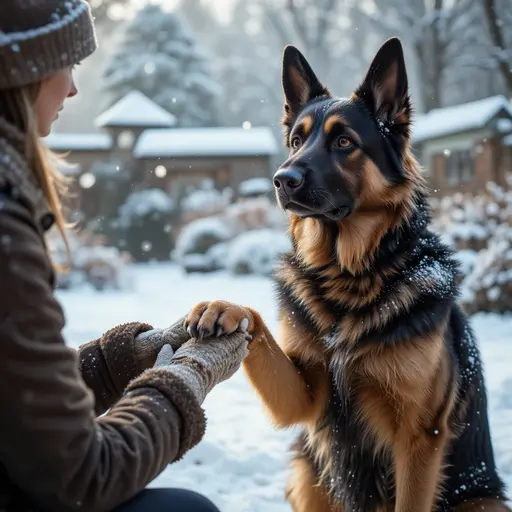
Sample Weekly Winter Exercise Plans by Pet Type
Customized plans ensure appropriate activity levels for different pets. Adjust based on your specific animal’s tolerance and local conditions.
High-Energy Cold-Tolerant Dogs (Huskies, Malamutes)
Monday: 30-minute morning walk at 10 AM on a cleared trail. 15-minute indoor treadmill session evening.
Tuesday: 20-minute backyard play with fetch in packed snow. Paw check and rest period.
Wednesday: 40-minute hike on snowshoe trails. Use booties and a jacket below 20°F.
Thursday: Indoor agility course for 20 minutes. Mental stimulation puzzles for 15 minutes.
Friday: 30-minute walk with a weighted backpack (10% body weight) for resistance training.
Saturday: Dog park visit during the warmest afternoon hours. Social play for 45 minutes.
Sunday: Rest day with a gentle 15-minute leash walk and a massage.
Medium-Energy Moderate-Tolerance Dogs (Labs, Goldens)
Monday: 25-minute walk at noon. Indoor fetch in the hallway for 10 minutes.
Tuesday: Treadmill session 20 minutes. Puzzle feeder for breakfast.
Wednesday: 20-minute walk with booties. Check paws for salt irritation.
Thursday: Indoor training session: practice commands for 20 minutes.
Friday: 25-minute walk. Treat-dispensing ball play for 15 minutes.
Saturday: Playdate with a compatible dog indoors for 30 minutes.
Sunday: 15-minute gentle walk. Rest and recovery.
Cold-Sensitive and Senior Dogs (Greyhounds, Small Breeds)
Monday: 15-minute walk when the temperature exceeds 40°F. Jacket required.
Tuesday: Indoor obstacle course for 15 minutes. Gentle stretching.
Wednesday: 10-minute walk if conditions permit. Otherwise, the indoor treadmill is at the lowest speed.
Thursday: Training games and puzzle toys for 20 minutes.
Friday: 15-minute walk with protective booties.
Saturday: Car ride with window viewing (mental stimulation) and gentle indoor play.
Sunday: Rest day with massage and passive range-of-motion exercises.
Indoor Cats and Small Pets
Daily: Two 10-minute interactive play sessions with a feather wand or laser pointer.
Monday/Wednesday/Friday: Food puzzles for all meals. Vertical climbing wall exploration.
Tuesday/Thursday: Catnip or silvervine enrichment. New box or paper bag exploration.
Saturday: Window perch bird-watching with treat rewards for alertness.
Sunday: Gentle grooming session followed by 5-minute play.
Cold Weather Exercise Impact on Pet Health
Understanding how winter conditions affect different pets helps prioritize safety adaptations. The following data illustrates why exercise modifications are critical for preventing seasonal health issues.
Winter Exercise Risks by Pet Type
Example Data: Based on synthetic modeling of veterinary survey patterns and cold weather exposure studies.
The data clearly demonstrates that adapted exercise routines dramatically reduce health risks. Short-haired dogs face a 78% issue rate with unmodified routines, dropping to just 12% when owners implement proper adaptations.
Senior pets show similar improvement, decreasing from 65% to 8% issues. Indoor-only routines present the lowest risk at 5%, while unmodified winter activity leads to weight gain in over half of all pets.
These statistics underscore why tailored winter exercise plans are non-negotiable for responsible pet ownership.
Advanced Winter Exercise Safety Protocols
Beyond basic adaptations, advanced protocols protect pets during extreme conditions and specialized activities.
Pre-Exercise Warm-Up Routines
Cold muscles injure more easily. Before outdoor exercise, engage your pet in 5-10 minutes of gentle indoor activity. Practice sit, stay, and heel commands to activate core muscles.
Use gentle massage on major muscle groups, focusing on the hind legs and shoulders. This increases blood flow and reduces ACL tear risk by up to 40%.
For athletic dogs, consider passive range-of-motion exercises. Gently flex and extend each leg joint 10 times. This lubricates joints with synovial fluid, crucial for preventing arthritis flare-ups in cold weather. Never force movement—stop if your pet shows discomfort.
Emergency Preparedness for Outdoor Adventures
Carry a pet emergency kit during extended winter outings. Include:
- Thermal blanket: Mylar emergency blankets pack small but retain 90% of body heat.
- Paw first aid: Antiseptic wipes, gauze, and vet wrap for pad injuries.
- Calorie source: High-fat treats (salmon-based) provide quick energy if hypothermia begins.
- Chemical hand warmers: Activate and place near (not directly on) your pet’s core if needed.
Know the location of the nearest 24-hour emergency vet before leaving home. Cell phone batteries die faster in cold—carry a portable charger.
Tell someone your planned route and return time. In whiteout conditions, a GPS tracker on your pet’s collar prevents separation disasters.
Monitoring Tools and Technology
Digital pet thermometers provide accurate core temperature readings. Normal canine temperature ranges from 101-102.5°F. Below 99°F indicates hypothermia requiring warming measures.
Pet activity monitors (like FitBark) track exercise intensity and rest patterns, alerting you to changes that may indicate cold-related stress.
Smart collars with temperature sensors warn when ambient conditions exceed your pet’s safe threshold. Program your pet’s specific limits based on breed and health.
Some advanced models send alerts to your phone when your pet’s activity level drops, potentially signaling developing hypothermia or injury.
Seasonal Mental Health and Behavioral Adaptations
Physical exercise represents only one component of winter wellness. Mental stimulation prevents the seasonal depression and anxiety that affects 30% of indoor pets during the winter months.
Environmental Enrichment Strategies
Rotate toys weekly to maintain novelty. Store half of your pet’s toys in a closet and swap them every 3-4 days. This simple act makes old toys feel new again, engaging your pet’s curiosity.
Place bird feeders outside windows for natural entertainment. The visual stimulation of wildlife activity occupies cats for hours.
Scent work provides excellent mental exercise. Hide treats around your home and encourage your pet to find them using their nose. Start with easy locations and increase difficulty.
Ten minutes of scent work tires a dog as much as a 30-minute walk. Use different scents (lavender, vanilla, catnip) to create increasingly challenging searches.
Socialization Maintenance
Winter isolation worsens behavioral problems. Schedule regular indoor playdates with known, compatible pets. Visit pet-friendly stores for short social outings.
Many hardware stores and pet supply chains welcome leashed pets, providing new environments for mental stimulation.
For cats, consider video content designed for feline viewers. Bird and rodent videos trigger natural hunting instincts, providing mental engagement. Limit screen time to 15-minute sessions to prevent overstimulation.
Conclusion
Effective pet winter exercise adaptations come down to understanding your pet’s cold tolerance, shortening outdoor sessions, using proper protective gear, and incorporating engaging indoor activities.
Begin with one small adjustment this week and monitor your pet’s weight, energy, and behavior throughout the season. Use a winter safety checklist to stay organized and share your progress with other pet owners. Above all, stay consistent—brief, well-adapted exercise is always better than skipping activity entirely.





